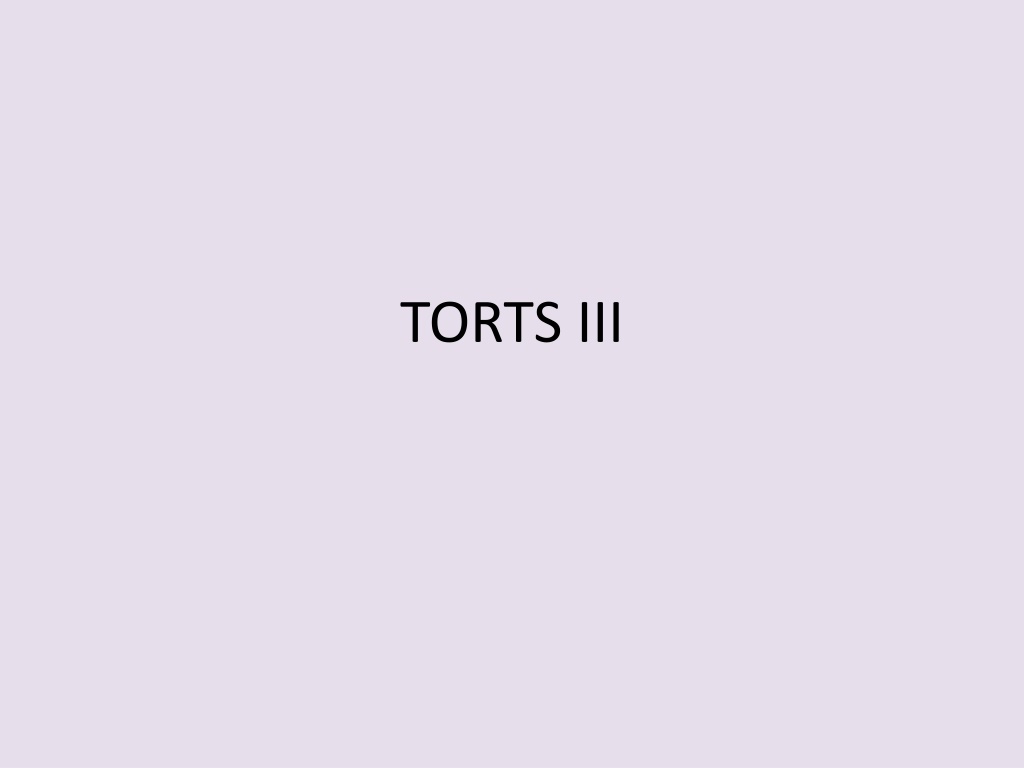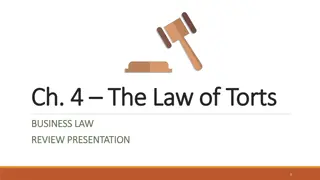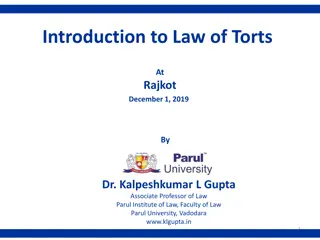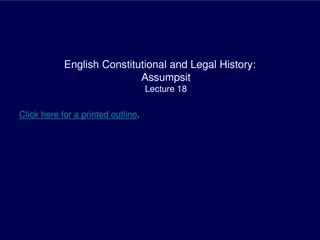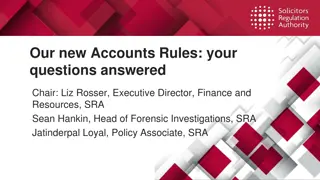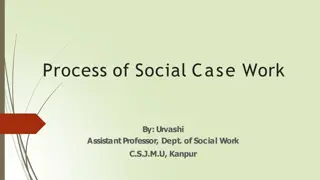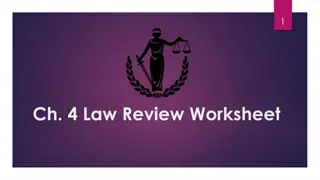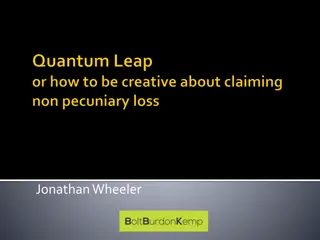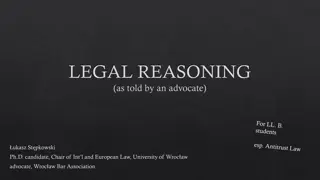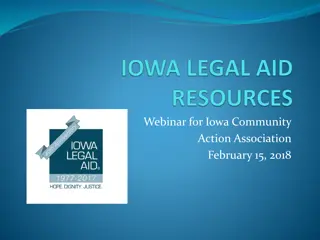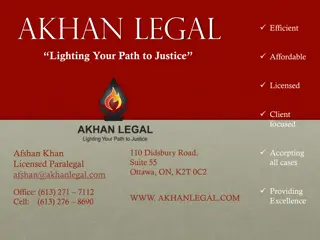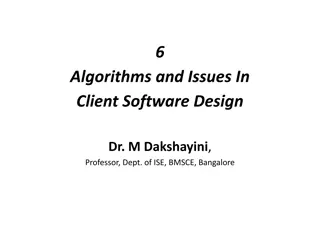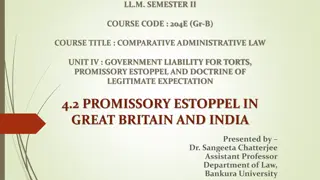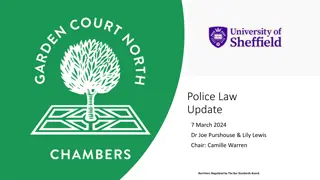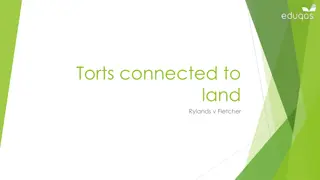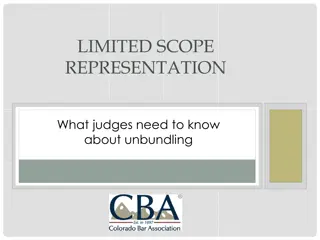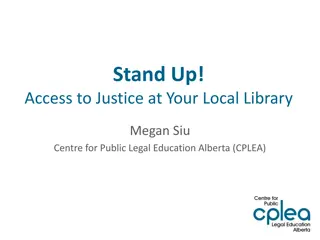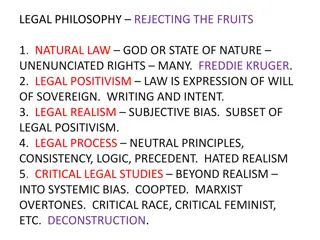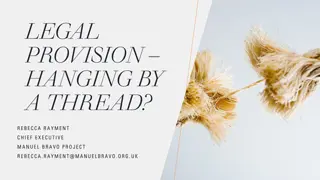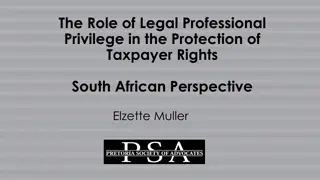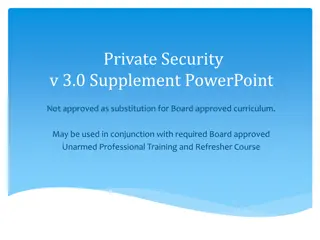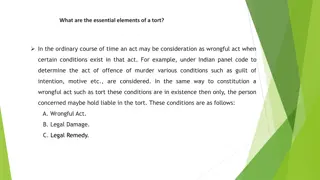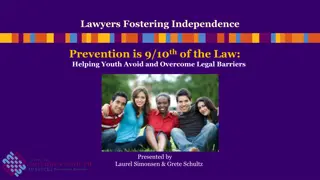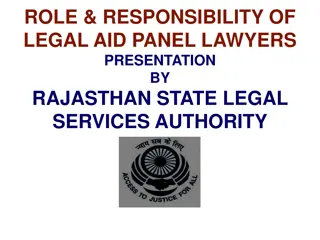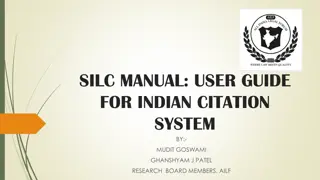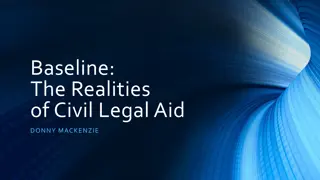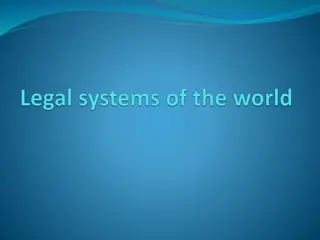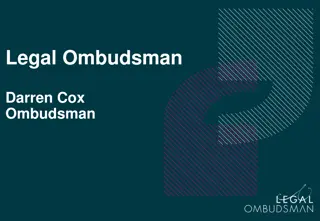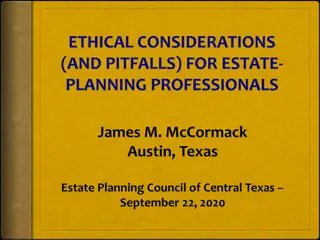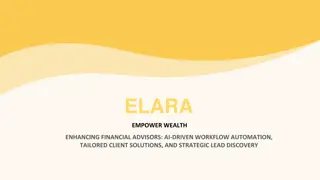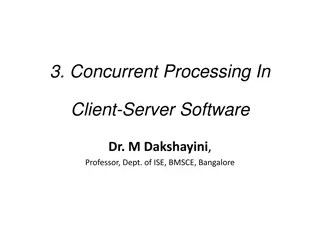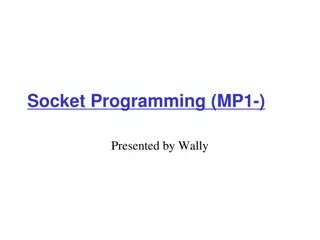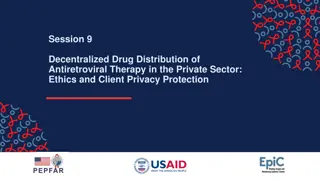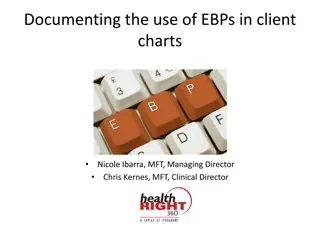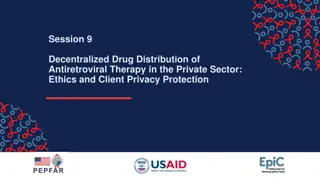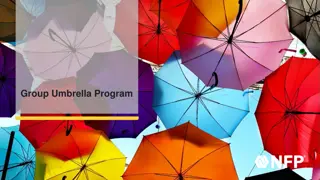Legal Options for Client in Torts Case
This content covers essential topics related to tort law, such as letters of advice outlining out-of-court settlement vs. lawsuit options, vocabulary use, a compulsory assignment, and the concept of frivolous lawsuits. It also explains punitive vs. compensatory damages through real-life examples involving a plaintiff who suffered burns from spilled coffee. Additionally, it discusses why McDonald's refused to settle out of court in a high-profile case. Overall, it provides valuable insights into legal procedures and language used in the field of tort law.
Uploaded on Sep 21, 2024 | 0 Views
Download Presentation

Please find below an Image/Link to download the presentation.
The content on the website is provided AS IS for your information and personal use only. It may not be sold, licensed, or shared on other websites without obtaining consent from the author. Download presentation by click this link. If you encounter any issues during the download, it is possible that the publisher has removed the file from their server.
E N D
Presentation Transcript
Letters of Advice Content Outlining options - the client can choose (out of court settlement x lawsuit) Structure Paragraphs introduction, conclusion (if you have any questions, do not hesitate to ) Linking words (therefore, however, clearly, in my view, ) Style formal, polite No contractions!!! (did not, was not, )
Letters of Advice Vocabulary Nice use of collocations Right x law the right is on your side Advice uncountable Grammar Should have foreseen/could not have foreseen If you agree (if + present) If they had not allowed that many people on the stairs, the stairs would not have collapsed. To sue the building company, who renovated No comma before THAT!!! (I have come to the conclusion, that there is ) law that
Compulsory assignment Instructions - Handout p.18 Number of words 150-200 To odevzd v rna Deadline 26 April
Frivolous lawsuit p.19 Pre-listening vocab What s the difference? Punitive damages x Compensatory damages Providing a plaintiff with the monetary amount necessary to replace what was lost. Compensatory damages https://encrypted-tbn2.gstatic.com/images?q=tbn:ANd9GcSpGkit_kTLaaTxqpKQ4sd7uLayprtJWarpkWfwsKE88Tw6_UNT8zr04w Punishing a defendant for his or her conduct as a deterrent to the future. ( Quasi-criminal ) Punitive damages
What does Fabio mean by frivolous lawsuit? The lawsuit is not to be taken seriously; the amount of damages awarded is far too high for the injury suffered.
What injury did the plaintiff suffer? The plaintiff received third-degree burns from spilled coffee. She had to undergo a medical treatment for 2 years. https://encrypted-tbn1.gstatic.com/images?q=tbn:ANd9GcSsokuyC3u4q4uJ8vRtPgdpT3Xx_P8XsRphy-66-7xn3efsvuSLkdFpCXw
Why did McDonalds refuse to settle out of court? McDonald s refused to settle because they most likely thought the plaintiff could not win the case, as in other cases the courts had ruled that coffee burns were an open and obvious danger.
How much did the court award Liebeck in compensatory and punitive damages? At first, Liebeck was awarded $200,000 in compensatory damages, which was reduced by 20% to $160,000. The judge also awarded her 2,7million in punitive damages, which was then reduced to $480,000.
What was the reasoning of the court? Gross negligence coffee was defectively manufactured Evidence showed that MacDonald s serve coffee much too hot (1982-1992 700+ people burned) https://encrypted-tbn2.gstatic.com/images?q=tbn:ANd9GcRBJ9zjgvO898e3_qWTtza3FtbO5VFg1iOK6YYKpkUn1tehDry05aEjZQ
How much did Liebeck finally receive in damages? We do not know, but it is thought that the amount was under $600.000. https://encrypted-tbn0.gstatic.com/images?q=tbn:ANd9GcTX9P21pEH3DSS6K6oHpKXirsBllzqjCjblkr49S_lDtvhyPJ22vn9JK4bk
Mistakes 79-year-old Stella Liebeck Coffee McDonald s She wasn t driving
CASE: Liebeck v. McDonaldss Restaurant 1. placed 2. spilled 3. determined 4. suffered 5. treated 6. settlement 7. defendant 8. found for 9. awarded 10. damages 11. punitive 12. appealed
True or made up? Case No. 1 Case No. 2 Case No. 3 Case No. 4 Case No. 5 Case No. 6 Case No. 7 Fabricated True Fabricated Fabricated True Fabricated Fabricated from a very old urban legend!
Lawyer-client interview In many ways for lawyers the initial client interview is like a first date. You do not know each other that well and hope to get better acquainted. Jim Calloway, Director of the Oklahoma Bar Association's Management Assistance Program What are important skills/qualities for a lawyer when dealing with a client in an interview? And what should s/he avoid?
A successful lawyer-client interview - + active listening effective questioning empathy giving feedback patience clear explaining knowledge of law correct application of law logical thinking timing judgemental impolite arrogant
Lawyer Client interview p. 11 OPENING Greeting the client, preliminary small talk 1. O. I hope you had no trouble finding our office. getting an overview of the case, explaining circumstances and structure of the interview 2. E. Let me assure you that everything you tell me today will be held in strict confidence. 3. J. I understand that you would like some advice on your employment situation.
LISTENING AND QUESTIONING listening actively to establish facts of events, checking for understanding 4. I. Mmm I see. 5. K. OK, we ve identified three issues which we need to focus on. These are Is that how you see it? identifying aims of the client 6. H. What would be an ideal outcome for you? 7. L. Perhaps you could let me know what your priorities are in this matter.
SUMMARIZING summarizing the client s concerns and goals 8. G. If I understand you correctly, you re saying that 9. M. Allow me to summarize what you ve said. seeking further information from the client 10. F. I need to know more about
ADVISING giving a brief outline of the relevant law and applying the law to the client s problem 11. N. The legal position is as follows 12. P. I am sorry to inform you that there is no legal ground for this claim. outlining available options, helping the client reach a decision if appropriate 13. D. I have to warn you that proving that will be extremely difficult. 14. A. You have two or three options here. The first... the second... and the third is to....
CONCLUDING describing the follow-up action to be taken by lawyer and by client 15. C. Let me go through the file and read through the contract. Then I ll prepare the complaint. concluding the interview appropriately 16. B. Thanks for coming in to see us today. Don t hesitate to phone or send me an email if you have any questions.
Case Study - Instructions You work as a novice lawyer in a prominent law firm. You have your first client coming for an interview and your supervisor is going to assess your performance during the interview. Do your best! Good luck!
Case study 1 Theft In a Hotel Room p.13 Groups of three - lawyer - his/her supervisor - client
When you finish, the supervisor gives the lawyer feedback. Be diplomatic and friendly! Feedback is not only listing the mistakes.
Case study 2 Missing Tablet in a Hotel Lobby p.14 Supervisor -> Client Lawyer -> Supervisor Client -> Lawyer
A tort, in common law jurisdictions, is a civil wrong which 1. _______ causes someone else to suffer 2. _______ or harm resulting in legal liability for the person who commits the 3. _______ act, called a tortfeasor. Tort is a 4. _______ of some duty clearly set by law, not by a 5. _______ agreement between two parties, as in breach of contract. When such a duty is breached, the injured party has the right to institute suit for 6. _____________ damages. Torts may be 7. ___________ in several ways, with a particularly common 8. _______ between negligent and intentional torts. Intentional torts include, among others, certain torts 9. _______ from the occupation or use of land. The tort of nuisance, for example, involves strict liability for a neighbor who interferes with another's 10. ___________ of his real property. Trespass allows owners to sue for 11. __________ by a person on their land. Several intentional torts do not involve land. Examples include false imprisonment - the tort of 12. __________ arresting or detaining someone, and libel, where a 13. ___________ statement is published and damages the plaintiff's reputation. 1. FAIR 2. LOSE 3. TORT unfairly loss tortious violation 4. VIOLATE 5. SPECIFY specific compensatory 6. COMPENSATE 7. CATEGORY 8. DIVIDE 9. ARISE categorized division arising enjoyment 10. ENJOY 11. ENTER entrances unlawfully 12. LAW 13. DEFAME defamatory
